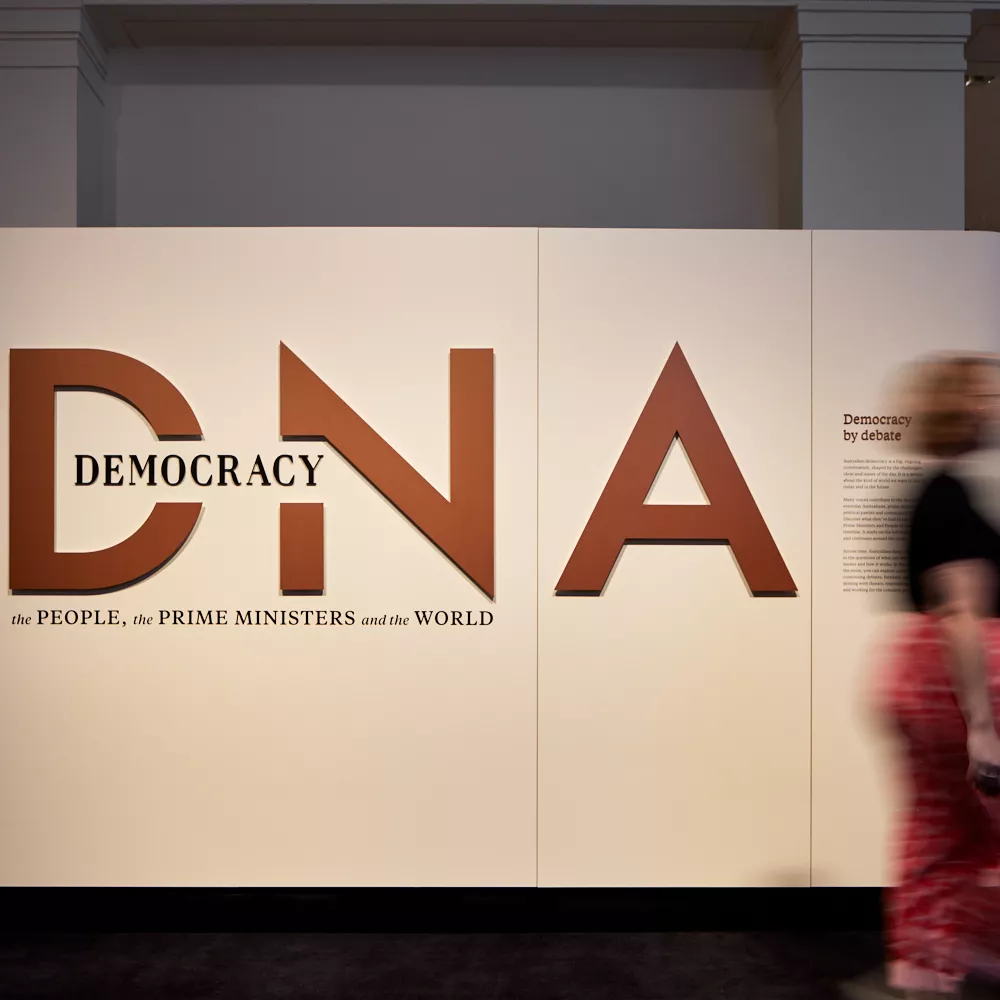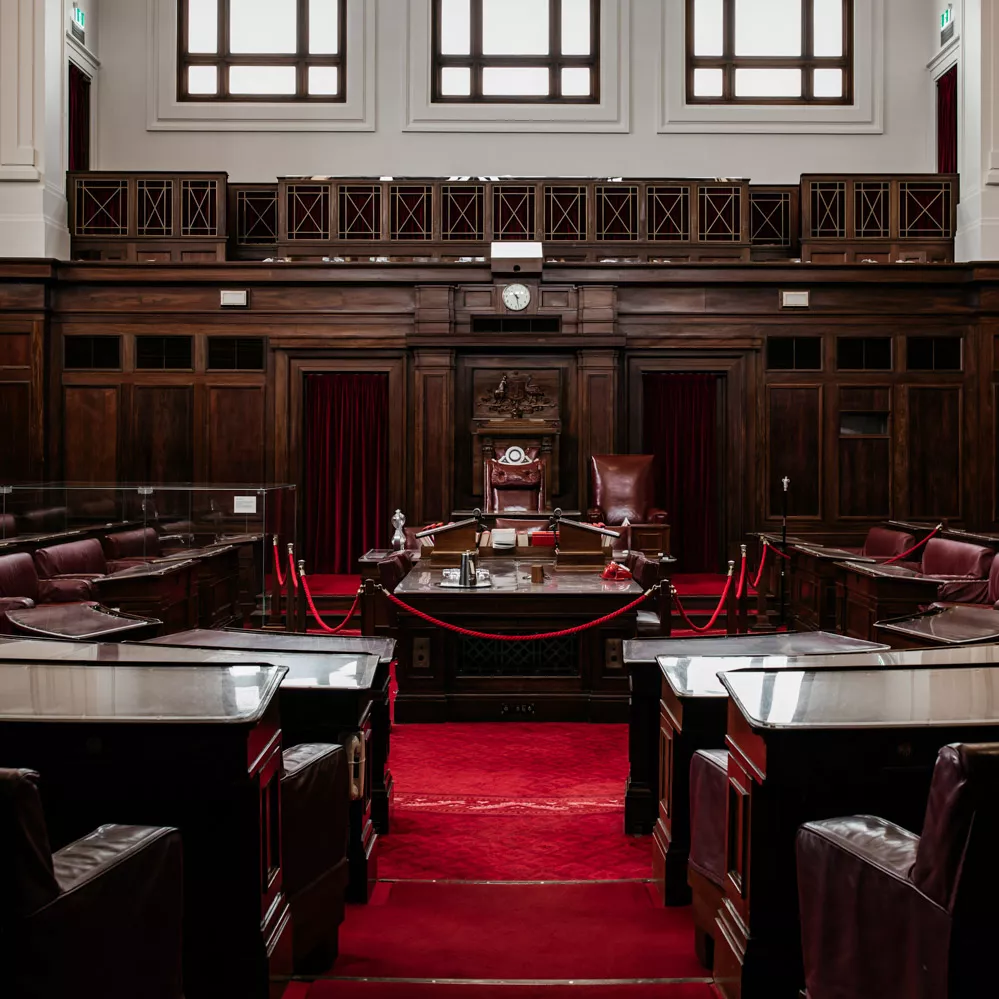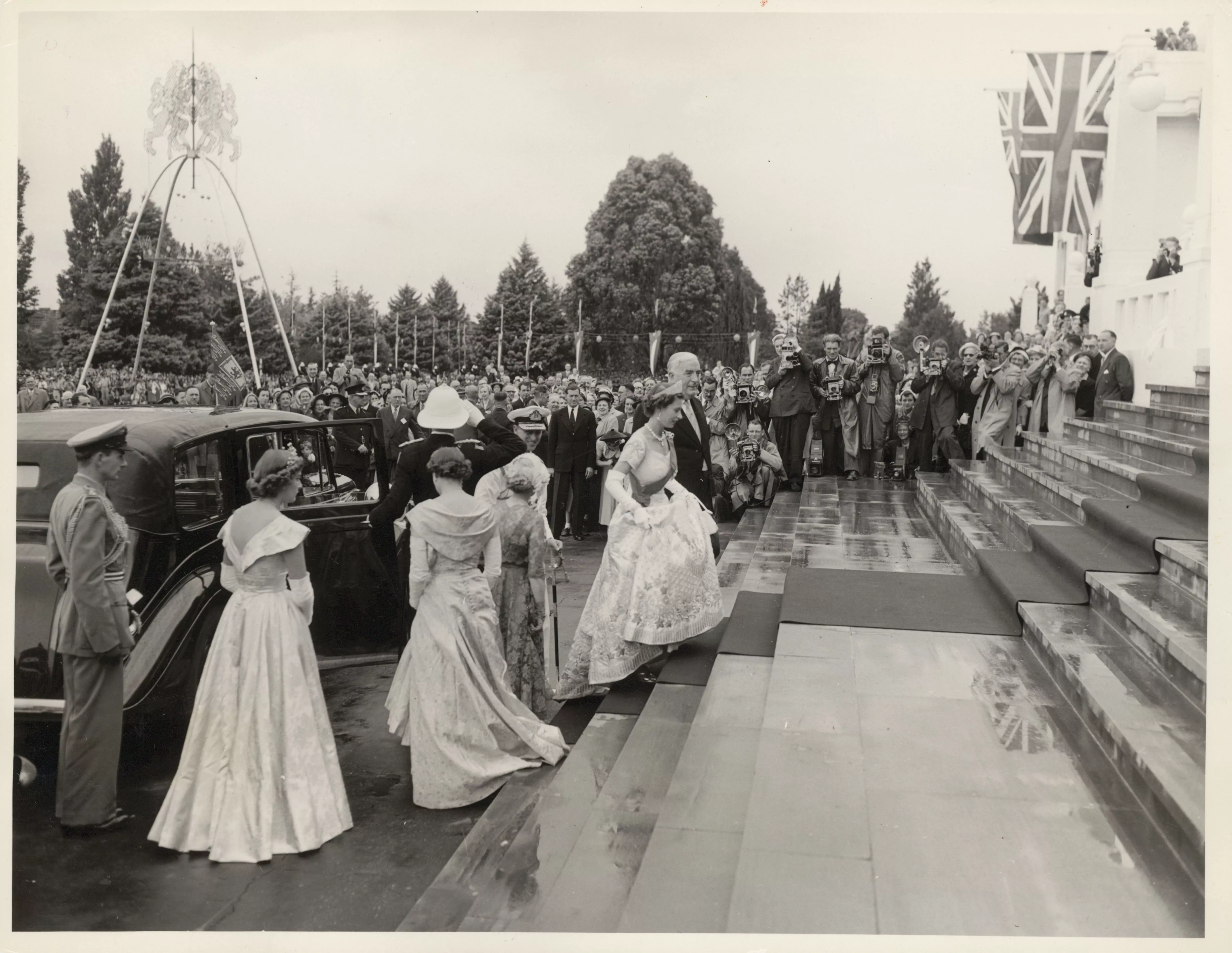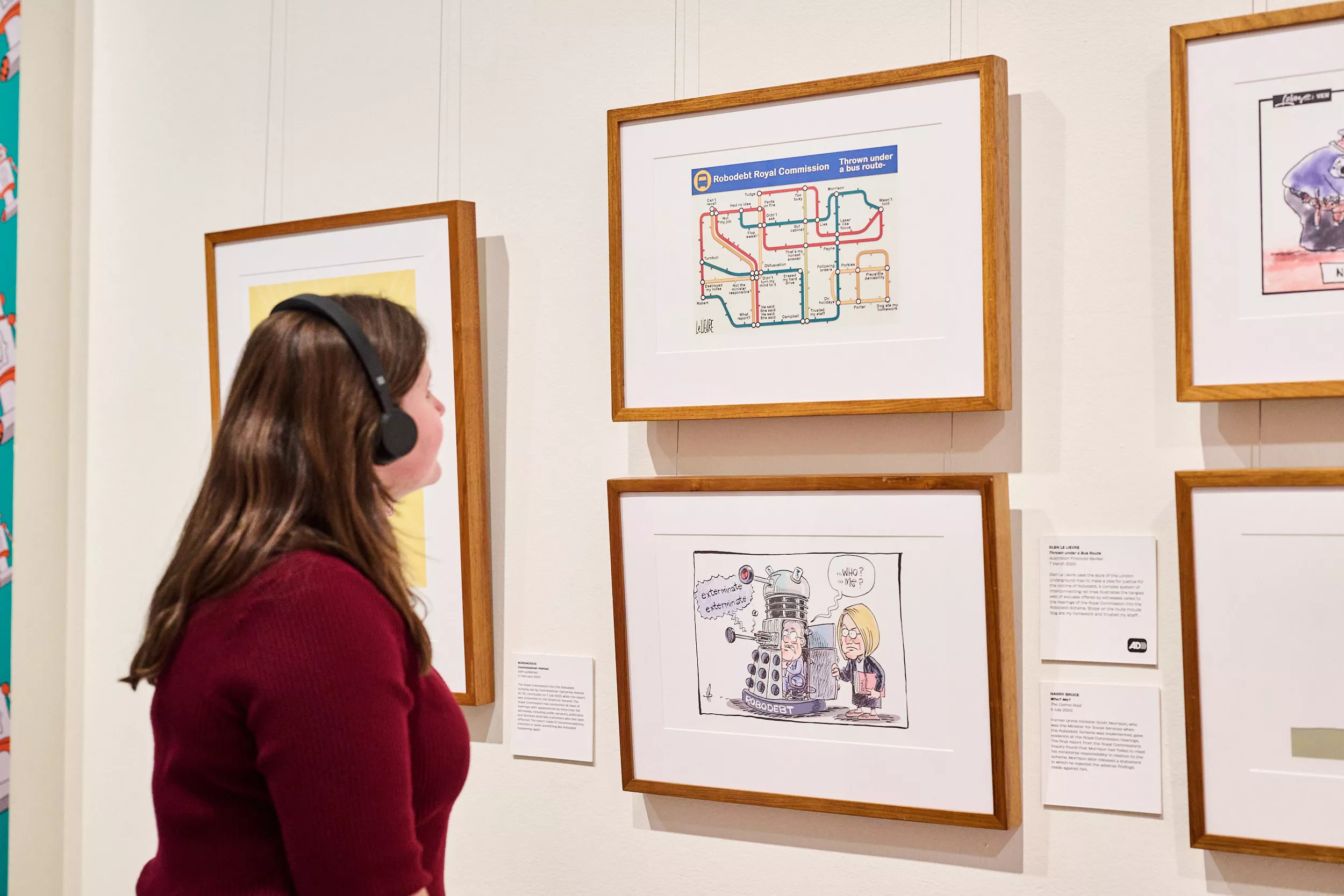The eyes have it
- DateWed, 27 Apr 2022
We know a lot about our past prime ministers, but certain details can take some research – like determining their eye colour.
Every so often, a research question comes up that leads me to reflect that I have a pretty cool and unusual job.
In the past, I’ve had to answer oddly specific questions about Australia’s prime ministers. Once, I was asked who the tallest was (Whitlam, by about half an inch), and another time if any of them were left-handed (at the time no, but now Tony Abbott holds the distinction of being the only left-handed PM I’m aware of).
As part of MoAD’s latest exhibition, Democracy DNA: the People, the Prime Ministers and the World, award-winning illustrator Nigel Buchanan created a series of portraits of all 30 former prime ministers.
Nigel collected hundreds of reference photographs of our former leaders and began taking notes: face shape, hairstyle, general demeanour.
But Nigel quickly ran into a problem. Many of Australia’s prime ministers served in a time before the ubiquity of colour photography. This meant that one key detail remained a mystery: what colour were their eyes?
Eye colour is one of those things we see all the time, but barely notice. Try an experiment. Think about the eyes of the people you see every day, outside of your immediate household and family. Your friends, co-workers, neighbours. Can you name their eye colour? I’ve known some of my colleagues for years, but I couldn’t recall what colour their eyes were, and they didn’t know mine.
The eyes can communicate so much that we don’t say with the rest of our faces. You might look at a public figure and make a judgement on whether they’re shifty, kind or honest, purely based on their eyes. But do you notice the colour?
There were five main ways I checked for the eye colour of Australia’s 30 former prime ministers.
Photographs
This seems like it would be the easiest way, but it was a lot harder than you’d think. For a start, you can’t determine eye colour if all photographs of that person are in black and white, as is the case for most of our prime ministers, especially the early ones. You also need fairly high-resolution photos to see someone’s eye colour clearly, and factors like lighting and position of the head can affect the appearance of someone’s eyes. It’s also trickier when your subject wears eyeglasses.
Descriptions
Fortunately, some prime ministerial biographers recorded contemporary descriptions of their subjects, right down to the eye colour. Some of them were rather imprecise, or reflective of the times – Edmund Barton’s biographer recorded that our first PM had black eyes, which we now understand means very, very dark brown. I also found descriptions of prime ministers in old newspaper records stored by the National Library of Australia’s online database, Trove.
Passports
Modern passports don’t usually include eye or hair colour, because there’s always a colour photograph. But back when photos were mostly monochrome, customs officials needed a way to verify who was in the photo, so passports usually noted physical characteristics. For some prime ministers, including John Curtin, Gough Whitlam, George Reid and Earle Page, getting hold of their passports was the best way of determining their eye colour.
Thankfully, in their personal papers, many ex-PMs have kept their expired passports, some of which have been digitised and made available online. For the ones that weren’t, I was able to physically access the papers and open the actual passport itself. Sadly, not every deceased prime minister has left their papers to the nation or included their passports. On behalf of future researchers, I beg you to keep your old passports, just in case you ever become prime minister.
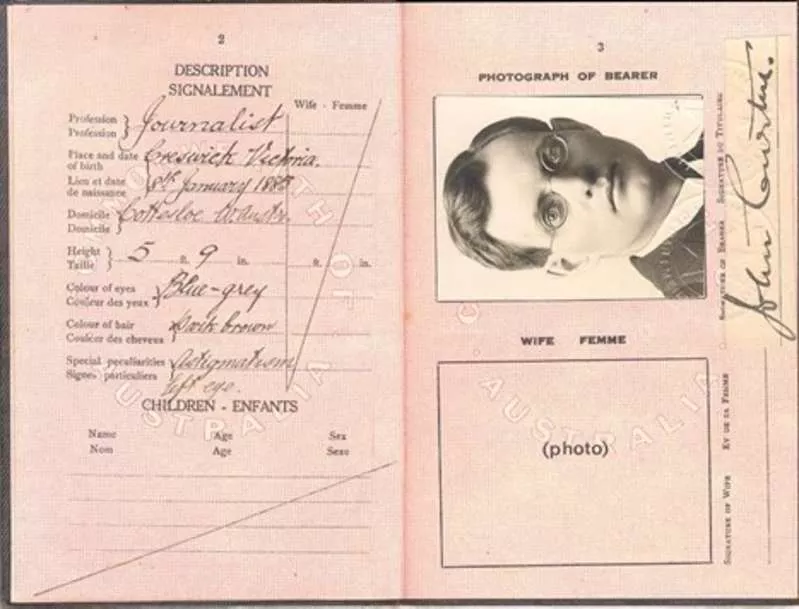
John Curtin’s 1924 passport, listing his height as 5 ft 9 inches (175 cm) and his eyes as blue-grey. John Curtin Prime Ministerial Library, Curtin University.
Official portraits
All but the most recent few prime ministers have had official portraits painted and hung in Parliament House. These portraits are available online in glorious, vivid colour. Using portraits for research risks mistaking artistic license for historical fact. But it seems unlikely that an artist would paint a person’s official portrait and get their eye colour wrong. These portraits would have been painted from life, or at least with copious notes and observations. Looking at these portraits, I was able to fill the gaps I hadn’t been able to cross-reference from photos, descriptions or passports.
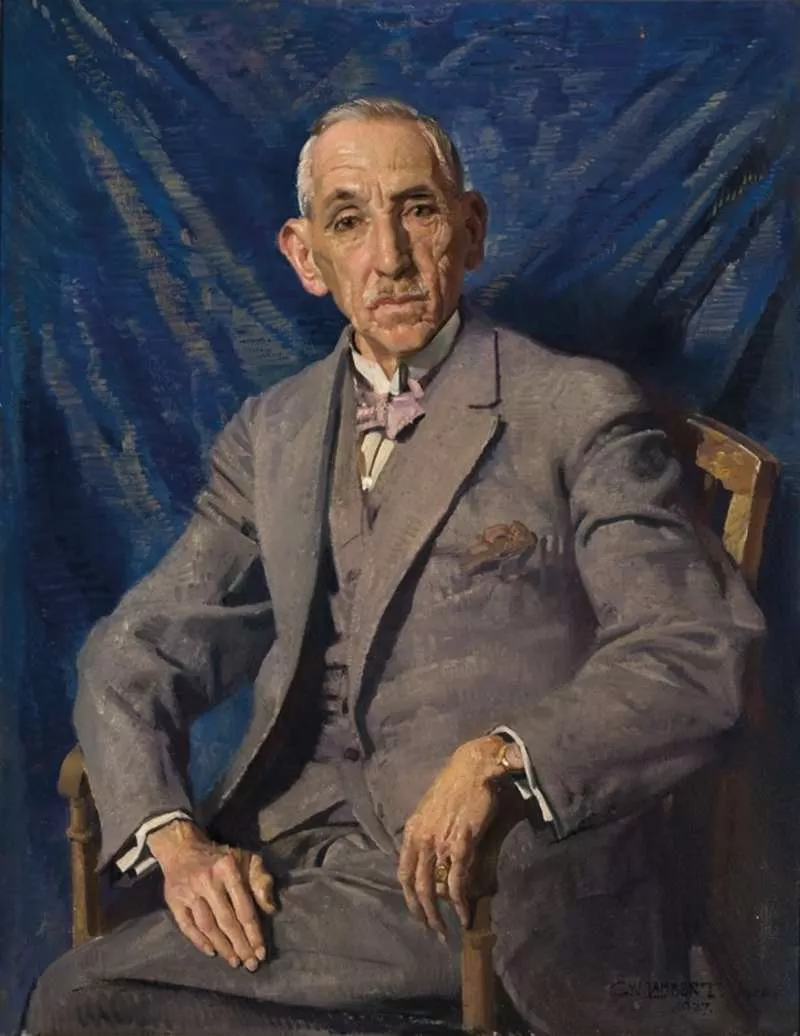
Official portrait of Billy Hughes by George Washington Lambert. The style of painting common in the early 20th century often didn’t give much attention to eye colour. As you can see, it’s hard to tell just from the portrait alone. - Parliament House art collection.
Personal accounts
In some cases, the immediate families or contemporaries of a prime minister had some insight. Paul Keating’s biographer, Troy Bramston, was able to tell me with ‘99% certainty’ that his subject has brown eyes. Harold Holt’s family, via his biographer Professor Tom Frame, were able to tell me he also had brown eyes.
So, what was the result? What are the colours of our prime ministers’ eyes?
- 12 PMs have had blue eyes (Watson, Reid, Cook, Hughes, Lyons, Page, Menzies, McEwen, Gorton, McMahon, Whitlam, Hawke)
- 3 PMs have had blue-green eyes (Fraser, Abbott, Turnbull)
- 5 PMs have had blue-grey eyes (Scullin, Curtin, Chifley, Howard, Rudd)
- 6 PMs have had brown eyes (Barton, Deakin, Fisher, Forde, Holt, Keating)
- 2 PMs have had hazel eyes (Gillard, Morrison)
- 1 PM has had hazel-brown eyes (Bruce)
- 1 PM has had hazel-green eyes (Fadden)
While it was easy enough to determine the eye colour of our most recent prime ministers, some proved a greater challenge.
Scullin and Cook were the trickiest. Official portraits didn’t shed any light (black eyes, but that could mean anything), I couldn’t get helpful photographs, find descriptions or see their passports. I eventually found news articles on Trove profiling both men which referred to their eyes as steel-grey (aka blue-grey) and blue respectively.
So, what does this tell us?
Well, not much, to be honest. Eye colour has no impact on someone’s personality, demeanour, intellect or capacity. The level of melanin in a person’s eyes, hair or skin bears no relation to their other qualities. To a certain extent, eye colour is also subjective and can change over time. However, we can look at the predominance of particular genetics, of blue eyes, to conclude that many Australian leaders are drawn from a relatively small pool of Caucasian ancestors – all blue-eyed people are thought to have a single common ancestor in the distant past.
Maybe this reveals something about Australia’s population; what it certainly reveals is the work and thought that goes into a great exhibition, and the attention to detail needed to make it as accurate as possible.
It also reveals just how interesting, and at times very niche and unusual, my job can be.
Curious to see the product of this research? You can view a selection of Nigel Buchanan’s illustrations of PMs over here, or come and visit our new exhibition, Democracy DNA: the People, the Prime Ministers and the World, to see the full set.
